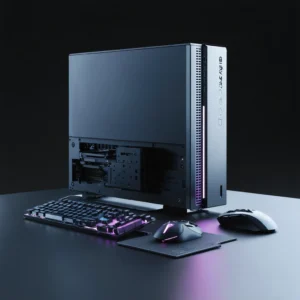
Ominous Talks of the Future
In recent interviews, Nintendo President of America Doug Bowser delivered unsettling remarks about the Switch 2. He emphasized that pre-order delays, rising tariffs, and escalating game prices might force Nintendo into a difficult pricing decision. Moreover, he showcased a blend of cautious optimism and economic realism that resonated with industry analysts and loyal fans alike. As the narrative unfolds, several gaming enthusiasts wonder if the beloved franchise will maintain its affordability or succumb to external cost pressures. Consequently, this revelation marks a pivotal moment in Nintendo’s evolution, as economic realities merge with long-held innovative aspirations.
The Pre-Order Delay and Its Implications
Early reports confirm that pre-orders for the anticipated Switch 2 will experience significant delays. In addition, Bowser explained that these delays likely tie to global supply chain challenges. Furthermore, he noted that such postponements may lead to price recalibrations. Therefore, gamers might have to reassess their buying timelines. Several experts hypothesize that these shifts in scheduling could indicate a broader restructuring of the console’s launch strategy. Meanwhile, enthusiasts remain hopeful yet cautious about the future, watching every market update with keen interest.
Tariffs and the Shifting Economic Landscape
Bowser underscored that tariffs have become one of the most critical aspects affecting pricing. He elaborated that tariffs, introduced amid shifting international trade policies, force companies to reallocate expenses. In turn, these costs readily trickle down to consumers. Additionally, he disclosed that increased production costs could impede the affordable status Nintendo once enjoyed. Interestingly, this situation triggers further debates on how global economic policies intersect with consumer technology. Consequently, analysts outline the following contributing factors:
- Higher production expenses
- Fluctuating international trade agreements
- Escalating raw material costs
Each factor plays a crucial role in determining the final price of the console.
Escalating Game Prices and Marketing Shifts
Subsequently, Bowser remarked that game prices alongside console premiums might rise in tandem. Notably, Nintendo continues to prioritize quality, yet budgetary constraints emerge more vividly. He mentioned that strategic shifts in the game development process might accompany these changes. Transitioning smoothly from hardware to software, Nintendo appears ready to balance innovation with market demands. In a series of bullet points, he outlined the anticipated challenges:
- Increased operational costs
- Enhanced development expenditures
- Revised retail pricing structures
Moreover, industry observers highlight that these adjustments could foster a new era of creative game design, even as they caution the potential for higher consumer expenses.
Transitioning from Promise to Practice
Intriguingly, Nintendo’s historic reputation for accessibility meets the modern era’s economic turbulence. Historically, Nintendo revolutionized gaming by marrying quality gameplay with reasonable prices. However, current market forces suggest a transformation is underway. Importantly, the company appears to brace for challenges in order to maintain its competitive advantage. As a result, the relationship between anticipated technological brilliance and financial limitations becomes a focal point. Consequently, consumers question if premium pricing might backfire or ultimately drive a new wave of innovation. Moreover, strategic adaptations promise to steer this iconic brand through turbulent economic waters.
Impact on Consumer Expectations
Observing customer sentiment, many consumers express both excitement and trepidation. In a narrative shift, loyal Nintendo fans recount their cherished memories while adjusting to the potential change in pricing. Likewise, industry experts note that:
- Fan expectations remain high
- Economic uncertainty looms
- Strategic marketing may evolve rapidly
In addition, several focus groups indicate that while excitement builds, cautious optimism prevails. Furthermore, strategic pricing adjustments could either enhance or frustrate the loyal customer base. Hence, the discussion about affordability, quality, and innovation intensifies.
The Broader Industry Context
Interestingly, industry observers highlight that Nintendo’s situation reflects larger trends across the gaming world. For example, various tech companies confront similar challenges due to evolving global trade dynamics. Meanwhile, regulatory shifts in different parts of the world compel companies to adjust pricing models and profit margins. Additionally, as technology advances, consumer expectations soar concurrently. Therefore, the economic pressure faced by Nintendo becomes part of a global narrative that impacts sectors beyond gaming. It follows that a broader conversation about technology, trade, and consumer rights emerges in tandem with these developments.
| Factor | Impact on Pricing | Consumer Reaction |
|---|---|---|
| Pre-Order Delays | Postponed launches, potential markup | Nervous anticipation |
| Tariffs | Higher production cost | Worry over affordability |
| Escalating Game Prices | Adjusted retail prices | Mixed enthusiasm |
As the table outlines, multiple facets contribute to the evolving pricing strategy. Moreover, each component engages both supporters and skeptics of the new direction.
Navigating the Future: Strategies and Expectations
Confronted with these issues, Nintendo positions itself to navigate uncertain waters. Firstly, the company intends to revisit operational strategies and cost structures. Secondly, partnerships and collaborations may provide an innovative edge to counterbalance tariff pressures. Finally, marketing efforts might pivot to emphasize value over price. Taken together, these initiatives illustrate Nintendo’s holistic approach to economic adaptation:
- Reassessment of production and supply chain logistics
- Negotiations with international partners
- Implementation of agile marketing campaigns
Through these steps, Nintendo intends to maintain consumer trust and sustain its legacy of affordable quality gaming.
A Narrative of Resilience and Adaptation
In a heartfelt narrative that interweaves optimism and caution, Nintendo readies itself for a transformative period. Simultaneously, the company’s leadership champions both technological progress and economic responsibility. Particularly, Bowser’s remarks take on a dual role: they act as both a warning and a call to adapt. Consequently, fans and industry insiders witness a testament to resilience amid challenging circumstances. Additionally, Nintendo harnesses its storied history as inspiration for overcoming current hurdles. Therefore, the narrative remains dynamic as the brand evolves in sync with a rapidly changing global economy.
Outlook for Gamers and Industry Experts
Remarkably, many gamers express enthusiasm despite anticipated price adjustments. Equally important, industry experts feel that such changes could spark innovative game design. Accordingly, market forecasts now incorporate:
- Anticipated revenue growth from premium pricing
- Enhanced focus on multi-platform innovation
- New revenue models in the gaming sector
Thus, both consumers and professionals continue discussing the future of gaming with vibrant debate. In a fascinating twist, this situation unfolds as an exemplar of how economic factors can drive technological innovation.
Conclusion: A Future Unwritten
Ultimately, Nintendo’s current stance on pricing reflects a broader conversation about innovation and economic resilience. The narrative remains vivid, and the company’s evolution appears intertwined with global trade dynamics and technological progress. Accordingly, Doug Bowser’s statements pave the way for discussions about what lies ahead for one of the world’s most influential gaming brands. Meanwhile, fans continue to share personal stories, and experts analyze every detail with precision. Moreover, as the gaming industry braces for change, all eyes remain on Nintendo to see how it manages the delicate balance between cost and creativity. In summary, the future appears both uncertain and exhilarating, promising an era defined by strategic foresight and adaptive innovation.







